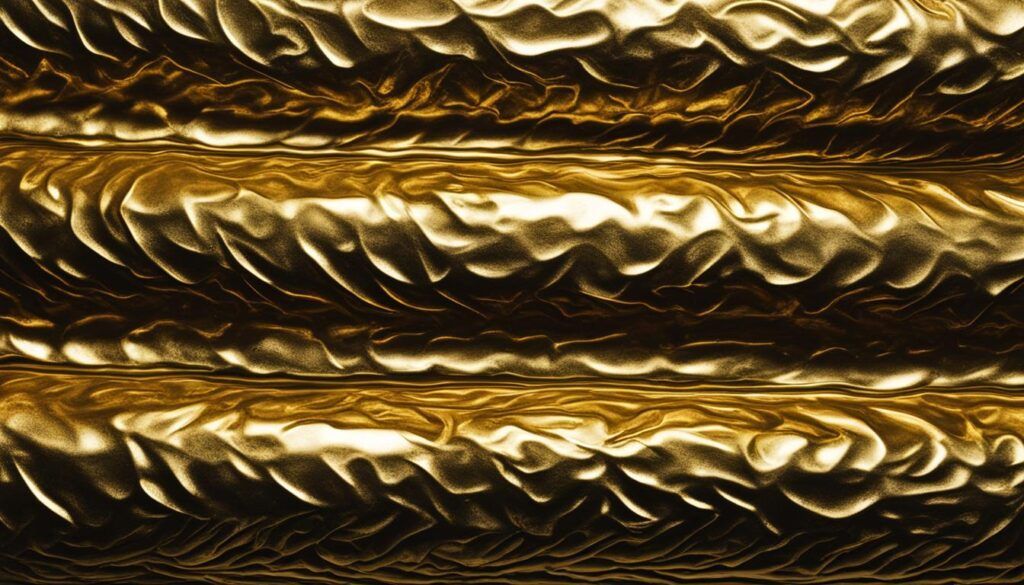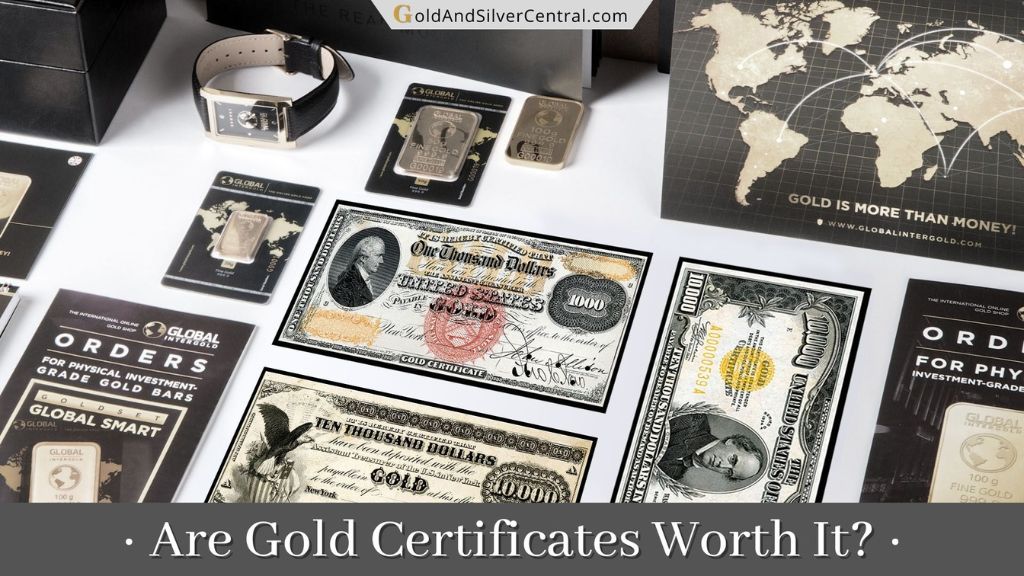When it comes to jewelry, one of the concerns many people have is whether it will tarnish over time. If you’re considering rolled gold jewelry, you may be wondering if it is susceptible to tarnishing.
Rolled gold, also known as gold-filled or gold fill, is a material made by bonding multiple layers of solid 14 kt gold to a core of high-quality jeweler’s brass. It has 1/20th of pure 14 kt gold content by weight, which makes it more resistant to tarnishing compared to gold plated jewelry.
With its higher quantity of pure gold, rolled gold offers durability and longevity. However, it’s important to understand how to care for rolled gold jewelry to maintain its shine.
Key Takeaways:
- Rolled gold jewelry has a higher quantity of pure gold, making it more resistant to tarnishing compared to gold plated jewelry.
- Proper care and maintenance of rolled gold jewelry can help preserve its shine and durability.
- Avoid exposing rolled gold jewelry to substances like perfumes, lotions, and sunscreens to prevent damage.
- Periodically clean rolled gold jewelry with a soft gold polishing cloth.
- Removing rolled gold jewelry during swimming or sports activities can prevent damage or snagging of delicate chains.
Is Rolled Gold the Same as Gold Plated?
When it comes to jewelry, the terms “rolled gold” and “gold plated” are often used interchangeably, but they actually refer to different processes and materials. Understanding the difference between rolled gold and gold plated can help you make an informed decision when purchasing jewelry.
Unlike gold plated jewelry, rolled gold has a much higher quantity of pure gold. It is created by bonding multiple layers of solid 14 kt gold to a core of high-quality jeweler’s brass. This process, known as gold filled, ensures that rolled gold has a thick layer of gold and is more resistant to wear and tarnish. Rolled gold jewelry must meet strict manufacturing standards, requiring at least 5% solid gold content.
In contrast, gold plated jewelry has a thinner layer of gold that is electroplated onto the surface of a base metal. The thickness of the gold layer can vary, depending on the quality and manufacturing process. Unlike rolled gold, gold plating does not have official standards, making it less reliable in terms of quality and longevity.
“Rolled gold has many times more pure gold than gold plated and undergoes a bonding process that creates a more durable material.”
This distinction in manufacturing processes and gold content makes rolled gold jewelry more valuable and durable compared to gold plated jewelry. Rolled gold offers the same look and color as solid gold at a more affordable price, making it an attractive option for those who want high-quality jewelry without breaking the bank.
To further illustrate the difference between rolled gold and gold plated, here is a comparison table:
| Rolled Gold | Gold Plated |
|---|---|
| Thick layer of solid 14 kt gold | Thin layer of gold electroplated onto base metal |
| More resistant to wear and tarnish | Greater risk of wear and tarnish |
| Meets strict manufacturing standards | No official standards |
| Higher value and durability | Lower value and durability |
As you can see, rolled gold outshines gold plating in terms of quality, longevity, and value. So, if you’re looking for jewelry that combines affordability with durability and a luxurious appearance, rolled gold is the way to go.
Is Gold Plating over Silver Better than Rolled Gold?
When it comes to choosing between gold plating over silver and rolled gold, there are some important factors to consider. While both options offer a gold appearance at a more affordable price, there are significant differences in terms of durability and value.
Gold plated sterling silver jewelry consists of a thin layer of gold applied to a sterling silver core. This gold layer is typically much thinner than that of rolled gold, which means it can wear off over time, revealing the silver underneath. While gold plated jewelry may initially have a similar look to solid gold, its longevity is compromised by the thinness of the gold layer.
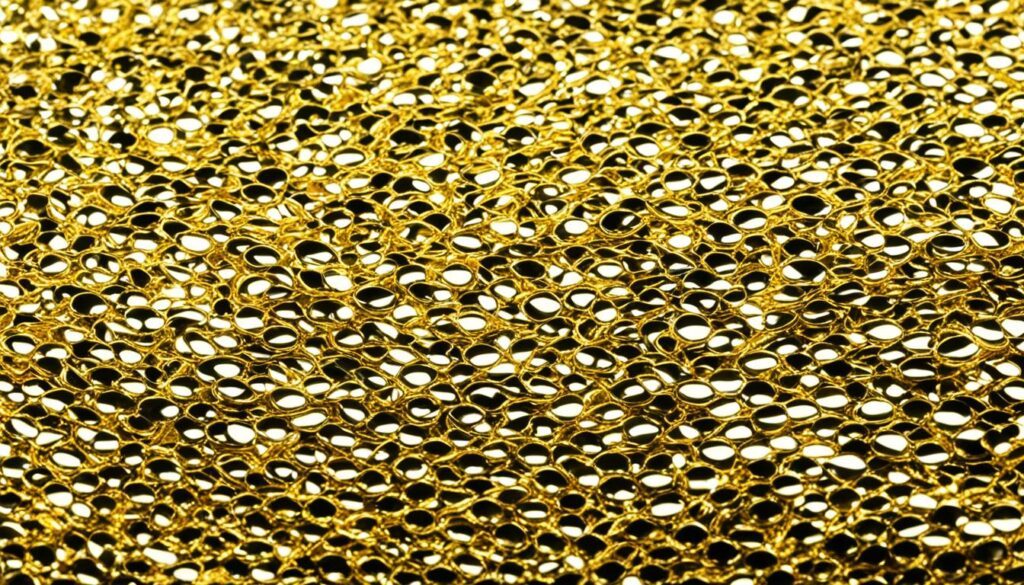
Rolled gold, on the other hand, boasts a higher quantity of solid gold and is more resistant to wear and tear. The process of creating rolled gold involves bonding multiple layers of solid 14 kt gold to a high-quality jeweler’s brass core. This results in a more durable material that can withstand daily wear without losing its gold appearance.
Compared to gold plated sterling silver, rolled gold offers superior longevity and value. Despite being more affordable than solid gold, rolled gold jewelry can last for a long time, making it a worthwhile investment. With rolled gold, you can enjoy the same look and color as solid gold at a fraction of the cost.
Can All Jewelry Be Made from Rolled Gold?
Rolled gold offers a durable and affordable alternative to solid gold jewelry. However, there are limitations to the types of jewelry that can be made using this material. Rolled gold is primarily available in the form of sheets or wire, which makes it suitable for crafting simple and elegant designs. It is commonly used to create classic pieces such as bracelets, necklaces, earrings, and rings.
However, intricate and detailed jewelry pieces that require casting may not be suitable for rolled gold. Casting involves creating complex shapes and designs by pouring molten metal into a mold. Since rolled gold is predominantly available as sheet metal or wire, it may not be easy to achieve intricate designs through casting methods. In such cases, jewelry makers often opt for alternative techniques such as gold plating or working with solid gold.
If you’re looking for a wide range of jewelry options, it’s essential to consider the limitations of rolled gold. While it is an excellent choice for simple and timeless designs, it may not meet your requirements if you’re looking for highly detailed or customized pieces.
If you’re uncertain about whether rolled gold is suitable for a specific design or have any questions regarding jewelry options, it’s always best to consult with a professional jeweler who can provide expert guidance based on your preferences and requirements.
Rolled Gold Jewelry Options
To give you a better understanding of the types of jewelry that can be made from rolled gold, here is a brief overview:
| Jewelry Type | Description |
|---|---|
| Bracelets | Simple and elegant bracelets crafted from rolled gold sheets or wire. |
| Necklaces | Classic necklaces with delicate pendants or chain designs. |
| Earrings | Stylish earrings, including hoops, studs, and dangle designs. |
| Rings | Rolled gold rings in various styles, including bands and statement designs. |
Remember, the versatility of rolled gold lies in its ability to create timeless and elegant pieces, perfect for everyday wear or special occasions. Consider your personal style and preferences when selecting rolled gold jewelry to ensure it aligns with your fashion taste and complements your overall look.
Why Should I Choose Rolled Gold Jewelry?
If you love the luxurious look of solid gold but find it too expensive for everyday wear, rolled gold jewelry is the perfect alternative. It offers the same exquisite appearance and color as solid gold, but at a more affordable price. With its durability and longevity, rolled gold jewelry is a wise investment that allows you to enjoy the elegance of gold without breaking the bank.
One of the key benefits of rolled gold jewelry is its affordability. While solid gold can be prohibitively expensive, rolled gold provides a cost-effective solution for those seeking high-quality, gold-like pieces. By bonding multiple layers of solid 14 kt gold to a core of high-quality jeweler’s brass, rolled gold offers a significant quantity of gold at a fraction of the price.
Another advantage of rolled gold jewelry is its longevity. The multiple layers of solid gold combined with the durable bonding process make rolled gold jewelry highly resistant to tarnishing and wear. With proper care and maintenance, rolled gold jewelry can last for many years, allowing you to enjoy its beauty for a long time.
When it comes to style and design options, rolled gold jewelry offers a wide range of choices. From earrings and necklaces to bracelets and rings, you can find a variety of rolled gold pieces to suit your personal taste and preference. Whether you prefer classic and timeless designs or trendy and contemporary styles, rolled gold jewelry provides versatile options to enhance your wardrobe.
Furthermore, rolled gold jewelry is a sustainable choice. By utilizing a high-quality brass core and a significant gold content, rolled gold reduces the need for mining additional gold from the earth. Choosing rolled gold jewelry contributes to a more sustainable and eco-friendly fashion industry.
In summary, rolled gold jewelry provides numerous advantages for those who desire the elegance of gold without the exorbitant price tag. Its affordability, durability, and style options make it a popular choice among jewelry enthusiasts. With proper care, rolled gold jewelry can become a cherished part of your collection, allowing you to enjoy the beauty of gold for years to come.
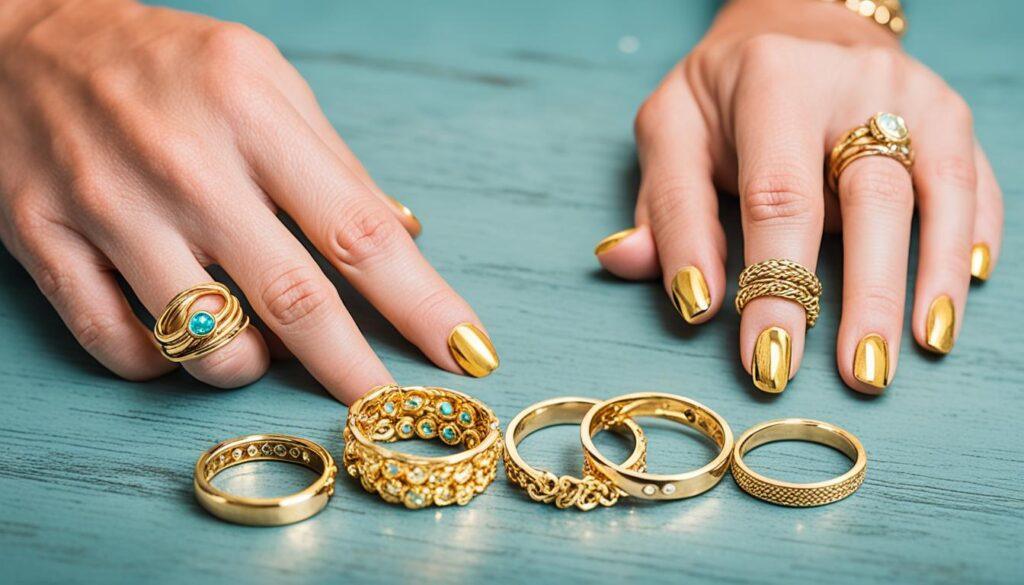
| Benefits of Rolled Gold Jewelry |
|---|
| More affordable than solid gold |
| Durable and long-lasting |
| Wide range of style and design options |
| Contributes to sustainable fashion |
Will Rolled Gold Jewelry Tarnish?
Rolled gold jewelry is highly resistant to tarnishing thanks to its durable manufacturing process. The multiple layers of solid 14 kt gold bonded to a core of high-quality jeweler’s brass create a protective barrier that helps prevent tarnishing. However, residues and oils from the skin can gradually build up on the jewelry, affecting its shine over time.
To keep rolled gold jewelry looking shiny and lustrous, it is recommended to give it a gentle polish from time to time. A soft gold polishing cloth is ideal for this purpose, as it effectively removes dirt, oils, and smudges without causing any damage to the rolled gold surface. Simply use the cloth to gently rub the jewelry, restoring its original shine and preventing any tarnish from dulling its appearance.
| Tarnish Resistance Level | Preventive Measures |
|---|---|
| High | Regularly wipe the jewelry with a soft gold polishing cloth. |
| Medium | Avoid exposing the jewelry to harsh chemicals, perfumes, and lotions. |
| Low | Store the jewelry in an airtight container or a jewelry box with anti-tarnish lining. |
By following these simple preventive measures and regularly cleaning your rolled gold jewelry, you can ensure that it maintains its beautiful appearance and remains tarnish-free for years to come.
How to Clean Rolled Gold Jewelry?
To keep your rolled gold jewelry looking its best, regular cleaning and maintenance are essential. Here are some simple steps to help you clean and care for your rolled gold pieces:
Gentle Polishing with a Soft Gold Polishing Cloth
One of the easiest ways to restore the shine of your rolled gold jewelry is by gently polishing it with a soft gold polishing cloth. This will remove any smudges, fingerprints, or minor tarnish that may have accumulated over time. Simply use the cloth to buff the jewelry surface in a gentle, circular motion until it regains its luster.
Washing with Warm Water and Mild Soap
If your rolled gold jewelry requires a more thorough clean, you can wash it gently in warm water and mild soap. Fill a bowl with warm water and add a small amount of mild soap, such as dishwashing liquid. Place your jewelry in the soapy water and let it soak for a few minutes. Then, use a soft-bristled toothbrush or a gentle cloth to clean the jewelry, paying close attention to intricate areas and hard-to-reach spots. Rinse the jewelry with clean water and pat it dry with a soft cloth.
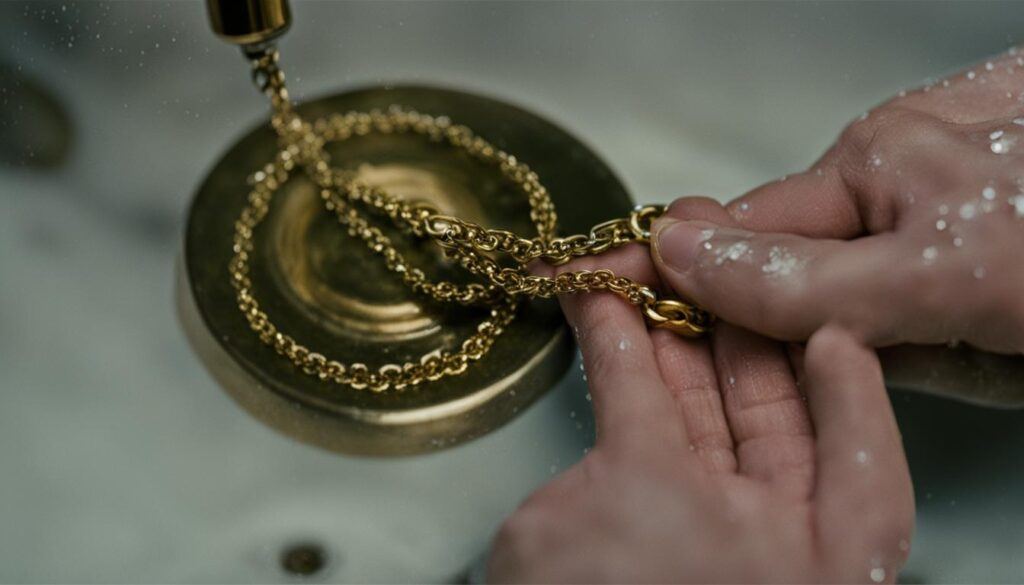
Avoiding Damaging Substances
To maintain the beauty and longevity of your rolled gold jewelry, it is important to avoid exposing it to substances that can cause damage. Perfumes, lotions, and sunscreens can contain chemicals that may react with the gold layer, leading to discoloration or tarnish. Therefore, it is advisable to apply these products before putting on your jewelry. Additionally, remove your rolled gold jewelry before swimming in chlorinated pools or engaging in sports activities to prevent contact with harsh chemicals or rough surfaces that may cause scratches or dents.
Maintaining and preserving the shine of your rolled gold jewelry relies on regular cleaning and proper care. By following these simple steps, you can enjoy your rolled gold pieces for years to come.
How to Make Rolled Gold Jewelry Last?
Caring for rolled gold jewelry is essential to maintain its beauty and durability. By following a few simple tips, you can preserve your rolled gold pieces for years to come.
Avoid Exposure to Harsh Substances
Perfumes, lotions, and sunscreens can contain chemicals that may damage rolled gold jewelry. To protect your pieces, it is best to avoid direct contact with these substances. If your jewelry does come into contact with them, gently wash it off with water and mild soap to remove any residue.
Take off During Showers and Swimming
Chlorinated water and soaps used in showers can be harsh on rolled gold jewelry, causing the metal to tarnish or corrode over time. To prevent damage, it is advisable to remove your rolled gold pieces before showering or swimming.
Remove During Sports Activities
During sports activities, delicate rolled gold chains can become tangled or snagged, leading to breakage or damage. To prevent this, it is best to remove your rolled gold jewelry before engaging in rigorous physical activities.
Clean and Store Properly
To maintain the shine and luster of your rolled gold jewelry, periodically clean it with a soft gold polishing cloth. This will remove any accumulated dirt or oils and restore its natural brilliance. When not in use, store your rolled gold pieces in a jewelry box or a soft pouch to protect them from scratches and tarnish.
“Proper care and maintenance are crucial to preserving the beauty and longevity of rolled gold jewelry.”
By following these care tips, you can ensure that your rolled gold jewelry remains as stunning as the day you first received it.
| Care Tips | Benefits |
|---|---|
| Avoid exposure to harsh substances | Prevents damage and discoloration |
| Take off during showers and swimming | Prevents tarnishing and corrosion |
| Remove during sports activities | Prevents breakage and damage |
| Clean and store properly | Maintains shine and minimizes scratches |
Proper care and maintenance are crucial to preserving the beauty and longevity of rolled gold jewelry. By implementing these care practices into your routine, you can enjoy your rolled gold pieces for many years to come.
What is Rolled Gold Made Of?
Rolled gold is composed of multiple layers of solid 14 kt gold bonded under pressure to a core of high-quality jeweler’s brass. This unique composition gives rolled gold its durability and distinctive gold appearance. Compared to other gold jewelry options, rolled gold offers a high-quality material that closely resembles solid gold.
Here is a breakdown of the materials used in rolled gold jewelry:
| Material | Description |
|---|---|
| Solid 14 kt gold | The outer layer of rolled gold is made of solid 14 kt gold. This gold layer contributes to the jewelry’s lustrous appearance. |
| Jeweler’s brass | The core of rolled gold is made of high-quality jeweler’s brass. This brass core provides the foundation for the gold layer and enhances the jewelry’s strength and durability. |
Together, the layers of solid gold and the core of jeweler’s brass create a resilient material that exhibits the beauty and elegance of gold. The use of high-quality materials ensures that rolled gold jewelry maintains its shine and quality over time.

In the image above, you can see the composition of rolled gold, with the layers of solid gold surrounding the core of jeweler’s brass.
What is the Difference Between Rolled Gold and Gold Plate?
When it comes to jewelry, there are various options available in terms of materials and finishes. Two popular choices are rolled gold and gold plate. While they may seem similar at first glance, there are significant differences between the two.
**Rolled gold** contains a much higher percentage of pure gold compared to gold plate. The process of creating rolled gold involves bonding multiple layers of solid 14 kt gold to a core of high-quality jeweler’s brass. This bonding process results in a more durable material that can withstand everyday wear and tear.
**Gold plate**, on the other hand, has a thinner layer of gold compared to rolled gold. Gold plating involves applying a thin layer of gold to a base metal through an electroplating process. While gold plate can provide a similar appearance to gold, the thin layer of gold makes it less durable and more prone to wear and tarnish over time.
One key difference between rolled gold and gold plate is the **solid gold content**. Rolled gold must meet strict standards and have at least 5% solid gold content. In contrast, there are no official standards for gold plate, so the thickness of the gold layer can vary.
The **durability** of rolled gold makes it a preferred choice for jewelry that is meant to be worn daily. It offers a longer lifespan and maintains its appearance for a more extended period compared to gold plate. Rolled gold jewelry can withstand everyday activities, such as showering or sports, without losing its shine or color.
As an informational journalist, my aim is to provide accurate and insightful information. I believe it is important to explore the differences between rolled gold and gold plate to help readers make informed decisions when purchasing jewelry.
To summarize the differences between rolled gold and gold plate:
| Rolled Gold | Gold Plate |
|---|---|
| Contains a higher percentage of pure gold | Has a thinner layer of gold |
| Undergoes a bonding process for added durability | Applied through electroplating process |
| Must meet strict standards with at least 5% solid gold content | No official standards, thickness can vary |
| More durable and resistant to wear and tarnish | Less durable and more prone to wear and tarnish |
By understanding the differences between rolled gold and gold plate, individuals can make an informed decision based on their preferences, budget, and desired level of durability.
Sources:
[1] “What is Rolled Gold?” – Jewelry Unlimited
[2] “The Difference Between Rolled Gold and Gold Plating” – Shields Jewelry
[3] “Gold-Filled Jewelry 101: What is Gold Fill?” – Jewelry by Johan
How to Identify Rolled Gold Jewelry?
Identifying rolled gold jewelry is essential for distinguishing it from other types of gold jewelry. Rolled gold jewelry is often marked with specific stamps or hallmarks that indicate its composition. By understanding these markings, you can confidently recognize rolled gold and make informed purchasing decisions.
When examining rolled gold jewelry, look for the following stamps or hallmarks:
- “Rolled Gold Plate” or “RGP”: These stamps signify that the jewelry is made from rolled gold. They assure you that the jewelry contains a substantial layer of gold.
- “1/20 12K RG” or “1/20 12K G.F.”: These markings indicate that the jewelry is rolled gold. The “1/20” refers to the ratio of gold to total weight, with 12K representing the purity of the gold used. These markings are typically found on the clasp or inside the band of the jewelry.
By identifying these stamps or hallmarks, you can confidently distinguish rolled gold jewelry from other gold-plated or gold-filled pieces that may have thinner or less durable gold layers.
Example:
“I always look for the ‘Rolled Gold Plate’ stamp when purchasing jewelry. It assures me of the quality and durability of the piece. Additionally, I pay attention to the purity markings, such as ‘1/20 14K RG,’ as they indicate the precise content of gold in the jewelry.”
| Markings | Meaning |
|---|---|
| Rolled Gold Plate or RGP | Indicates that the jewelry is made from rolled gold |
| 1/20 12K RG or 1/20 12K G.F. | Signifies that the jewelry contains 1/20th of 12-karat gold and is rolled gold |
Conclusion
In summary, rolled gold jewelry is an excellent choice for those seeking an affordable alternative to solid gold. With its multiple layers of 14 kt gold bonded to high-quality jeweler’s brass, rolled gold jewelry provides a similar appearance and color to solid gold. However, to ensure the longevity and luster of rolled gold jewelry, proper maintenance is crucial.
To maintain rolled gold jewelry, it is important to avoid contact with substances such as perfumes and lotions, as these can cause damage and tarnish. Removing jewelry before swimming or engaging in sports activities can also prevent accidental damage or snagging of delicate chains. Additionally, periodic cleaning with a soft gold polishing cloth will help preserve the shine and keep the jewelry looking its best.
By following these simple care instructions, rolled gold jewelry can maintain its beauty and durability for years to come. So whether you’re looking to add a touch of elegance to your everyday style or searching for the perfect gift for a loved one, rolled gold jewelry is a versatile and affordable option that offers lasting beauty and value.
FAQ
Does Rolled Gold Tarnish?
Rolled gold jewelry is highly resistant to tarnishing due to its durable manufacturing process. However, residues and oils from the skin can build up on the jewelry over time, affecting its shine. To keep rolled gold jewelry looking shiny, it is recommended to give it a gentle polish with a soft gold polishing cloth from time to time.
Is Rolled Gold the Same as Gold Plated?
No, rolled gold is different from gold plated jewelry. Rolled gold has a higher quantity of pure gold and undergoes a bonding process that creates a more durable material. On the other hand, gold plated jewelry has a thinner layer of gold and is less durable.
Is Gold Plating over Silver Better than Rolled Gold?
Gold plating over silver, also known as gold plated sterling silver, may have a sterling silver core, but the gold layer is usually thinner and can wear off over time. Rolled gold, on the other hand, is more long-lasting and durable, offering the same look and color as solid gold at a more affordable price.
Can All Jewelry Be Made from Rolled Gold?
Rolled gold is generally used for making jewelry from sheets of rolled gold material or rolled gold wire. It is not suitable for detailed pieces that require casting, as rolled gold is primarily available as sheet metal or wire. For intricate designs, gold plating or solid gold is often used instead.
Why Should I Choose Rolled Gold Jewelry?
Rolled gold jewelry is a good alternative for those who love the look of solid gold but find it too expensive for everyday pieces. It offers the same appearance and color as solid gold but at a more affordable price. With proper care, rolled gold jewelry can last for a long time.
Will Rolled Gold Jewelry Tarnish?
Although rolled gold jewelry is highly resistant to tarnishing, residues and oils from the skin can affect its shine over time. To prevent tarnish, it is recommended to avoid exposing rolled gold jewelry to perfumes, lotions, and sunscreens. Regularly cleaning and polishing the jewelry can help maintain its luster.
How to Clean Rolled Gold Jewelry?
Rolled gold jewelry can be gently polished with a soft gold polishing cloth to restore its shine. If a more thorough clean is needed, the jewelry can be washed gently in warm water and mild soap, taking care not to scratch the pieces. It is important to avoid getting perfumes, lotions, and sunscreens on rolled gold jewelry, as these can be damaging to the precious metal.
How to Make Rolled Gold Jewelry Last?
To help rolled gold jewelry last, it is recommended to avoid exposing it to perfumes, lotions, and sunscreens. If these substances come into contact with the jewelry, they should be gently washed off with water and mild soap. It is also advisable to remove rolled gold jewelry before showering or swimming in chlorinated water and during sports activities to prevent damage or snagging of delicate chains.
What is Rolled Gold Made Of?
Rolled gold is made by pressure bonding multiple layers of solid 14 kt gold to a core of high-quality jeweler’s brass. It has 1/20th of pure 14 kt gold content by weight.
What is the Difference Between Rolled Gold and Gold Plate?
Rolled gold contains significantly more pure gold than gold plate. Rolled gold undergoes a bonding process that creates a more durable material, whereas gold plate has a thinner layer of gold and is less durable. Rolled gold must meet strict standards and have at least 5% solid gold content, while there are no official standards for gold plate.
How to Identify Rolled Gold Jewelry?
Rolled gold jewelry is often marked with stamps or hallmarks indicating its composition. Look for stamps such as “Rolled Gold Plate” or “RGP,” which signify that the jewelry is made from rolled gold. Other markings may include the purity of gold used, such as “1/20 12K RG” or “1/20 12K G.F.” These markings indicate that the jewelry contains 1/20th of 12-karat gold and is rolled gold.

